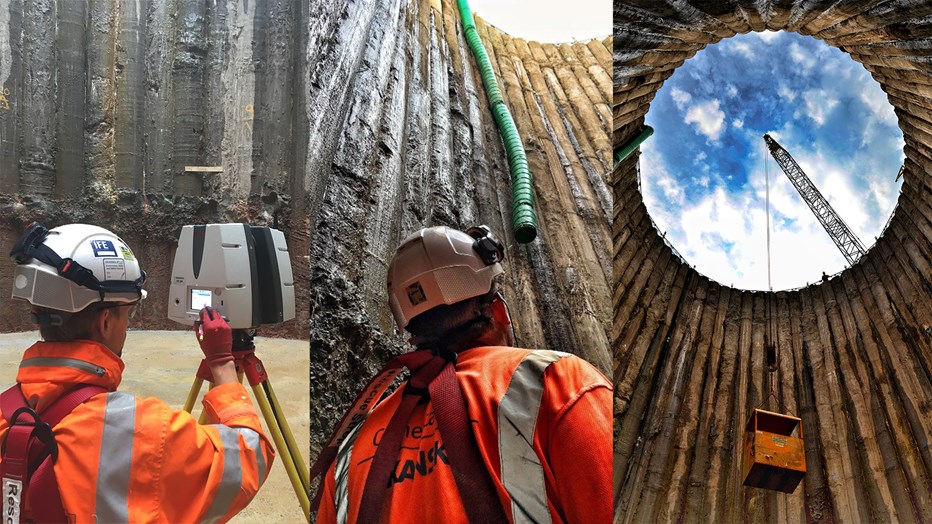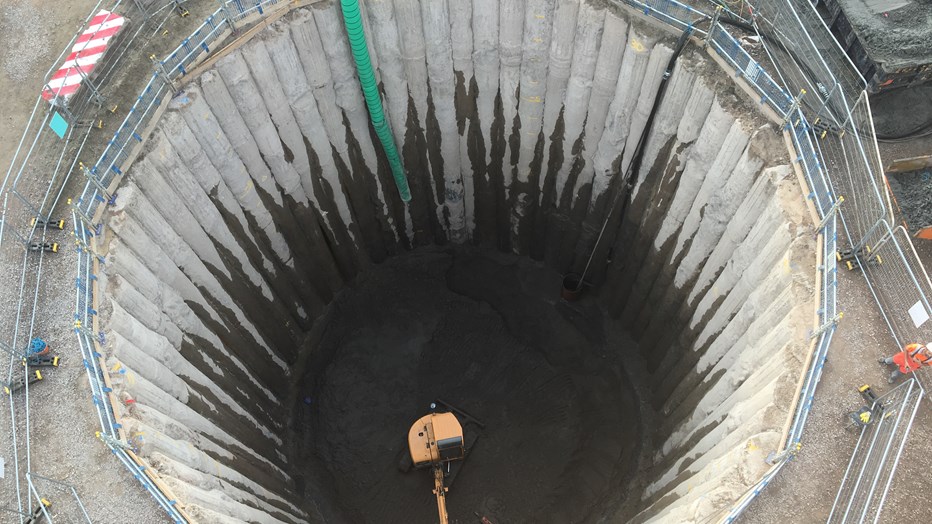Wessex Water’s Burnham-on-Sea Bathing Water Improvement scheme was a £39million project to upgrade sewerage infrastructure, with the aim of improving water quality for the seaside town of Burnham-on-Sea on the Severn Estuary.
Cementation Skanska was awarded the contract for the Bristol Road Sewage Pumping Station, where a 26m deep 15.5m diameter shaft was required to provide storm water storage capacity of 3000m3, reducing the amount of water flowing into the River Parrett during heavy rain.
Wessex Water appointed Lewis Civil Engineering as principal contractor to build the pump station and stormwater overflow tank, under a £6.5million design and build contract.
The challenge
The pumping station is tightly squeezed between the A38 Bristol Road and the River Parrett. The specification for the project outlined that the safest and most practical design for the tank was as a 26m deep, 15.5m diameter circular secant piled shaft covering a sixth of the site. The Severn Estuary ground conditions also proved a significant challenge for geotechnical works and the construction of deep shafts in particular.
The solution
Graeme Mitchell, Cementation Skanska’s Southern Projects Director, said: “The original shaft design included substantial temporary works. We developed an alternative design using hoop stress to provide temporary support. This eliminated the need for internal propping, meaning excavation would be faster and construction significantly cheaper.”
This was an approach Cementation Skanska had previously used to build a 4,500m3 storage at a project in Manchester. That experience meant Mitchell was confident the hoop stress design could be adapted to the ground conditions at Bristol Road, which helped demonstrate to Wessex Water and Lewis Civil Engineering that it would work.
Ground conditions were a particular challenge at the site. Mitchell said: “Beneath a thin layer of made ground we had to pile through about 26m of estuarine alluvium, principally water-bearing sands and soft clays, with a band of coarse gravel at the base, and into the underlying Mercia Mudstone, which was weathered at the top.”
Cementation worked collaboratively with Lewis Civil Engineering and their scheme designers on the solution. By deploying a consistent team from tender, through design, construction and during the excavation of the shaft, Cementation worked to support the overall programme and technical delivery of this complex project. We also held regular management and progress meetings with open and transparent behaviours to ensure that project risks were successfully managed and mitigated.
The outcome
Using laser scans, the team produced an accurate 3D as-built picture of the shaft once the final depth had been reached and a concrete blinding layer cast in the base, 26m down. The team monitored pile installation, including casing placement, using both conventional surveying methods as well as self-levelling lasers. This involved continual checking of installation criteria using conventional, electronic and digital devices with a
full time surveyor monitoring the verticality and installation of the casing.
The 3D scanning allowed actual position to be plotted against the theoretical position, confirming that all piles were installed well within the specified tolerances. Lewis Civil Engineering then installed the shaft’s permanent precast concrete lining.
Cementation Skanska believes it may have constructed the deepest unpropped secant shaft in the United Kingdom. The piles were designed to maintain stability through hoop stress in the temporary condition, resisting the external soil and water pressures without the need for internal propping during excavation. The project was a finalist at the 2017 GE
Awards for a UK Project with a Geotechnical Value of between £1million and £3million.
Simon Rose, from Lewis Civil Engineering, said: “A totally unique scheme and with the very tight footprint of the work area Lewis and Skanska came together and delivered!”


